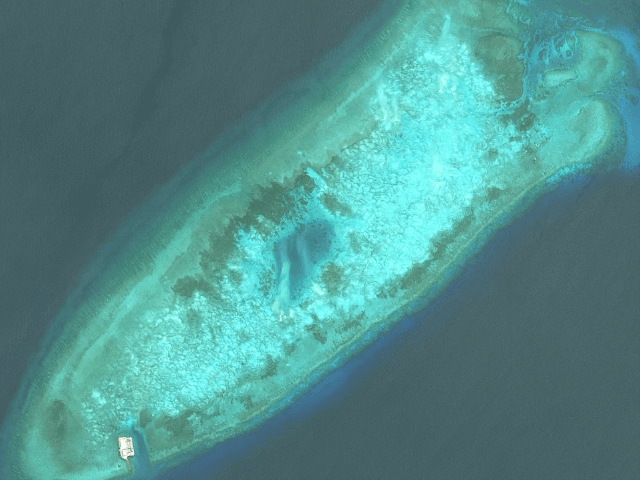On Sunday, China’s Ministry of Civil Affairs and Ministry of Natural Resources released “standard” names for 80 geographical features in the South China Sea, in an act “reaffirming China’s sovereignty in the region,” Chinese state media reported on Monday.
China bestowed names on 25 islands, shoals, and reefs, as well as 55 undersea entities, such as oceanic mountains and ridges, the South China Morning Post (SCMP) said on Monday. China last made such a decree in 1983, naming 287 geographic features in the South China Sea, a hotly contested territory claimed, in part, by most Southeast Asian nations and almost entirely by China.
The “standard” names declaration was made one day after China’s State Council said it had set up two new administrative districts, “Xisha and Nansha,” to govern the Paracel and Spratly island chains in the South China Sea. The Spratly Islands are the Philippines’ sovereign territory, while the Paracel Islands belong to Vietnam. Nevertheless, China unlawfully claims both island chains and nearly all of the South China Sea.
According to China, the new administrative districts were established as part of a “normal move for better scientific management and to safeguard territorial sovereignty.” The announcement comes in direct response to recent activity by United States warships and aircraft in the South China Sea, itself a reaction to China’s increased aggression in the disputed territory over the past few months.
Last Friday, a Chinese government survey ship reportedly tagged an exploration vessel operated by Malaysia’s state oil company, Petronas, in waters near Malaysia, according to three regional security forces, Reuters said on Saturday.
China’s Haiyang Dizhi 8 was spotted close to Malaysia’s West Capella ship, reportedly 200 miles off the Malaysian coast, within Malaysia’s exclusive economic zone. Sources said a Vietnamese vessel was also seen tagging the West Capella in the Malaysian waters claimed by China and Vietnam.
China’s Haiyang Dizhi 8 was flanked at one point by more than ten Chinese vessels, including some belonging to China’s maritime militia and coastguard, according to a Malaysian security source.
The United States said China has been taking advantage of the distraction caused by the Chinese coronavirus pandemic in recent months to tighten its grip on the South China Sea.
Prior to surveying the Malaysian oil vessel last Friday, the Haiyang Dizhi 8 was spotted off Vietnam earlier last week. This was the second time in the past year it had conducted suspected oil exploration surveys within Vietnam’s exclusive economic zone. Last week, the U.S. State Department remarked on the Haiyang Dizhi 8’s presence in Malaysian waters in a statement shared by Reuters in its report on Saturday.
“The United States is concerned by reports of China’s repeated provocative actions aimed at the offshore oil and gas development of other claimant states … In this instance, [China] should cease its bullying behavior and refrain from engaging in this type of provocative and destabilizing activity,” the statement said.
Home to vast oil and natural gas reserves and one of the world’s most valuable trading routes, the South China Sea is a highly coveted waterway. Over the past few years, China has expanded its control in the area, illegally claiming zones traditionally considered international territory or the sovereign territory of Southeast Asian nations such as the Philippines, Vietnam, Malaysia, Taiwan, and Brunei. According to a 2016 international court ruling, China’s maritime claims in the South China Sea are unlawful. This has not stopped China, however, who rejects the ruling and continues to assert its power over nearly the entire body of water.
The U.S. supports Southeast Asian nations blocked by China from exercising control over their lawful territory by sending warships and aircraft to operate in the contested areas. Most recently, the U.S. sent two military aircraft to fly near Taiwan on April 13 after China conducted military drills in and around Taiwanese waters and airspace.
The U.S. presence in the sea has been met with resistance by China. In March, China put forth the possibility of using an electromagnetic pulse weapon (EMP) to thwart American ships entering the South China Sea.

COMMENTS
Please let us know if you're having issues with commenting.